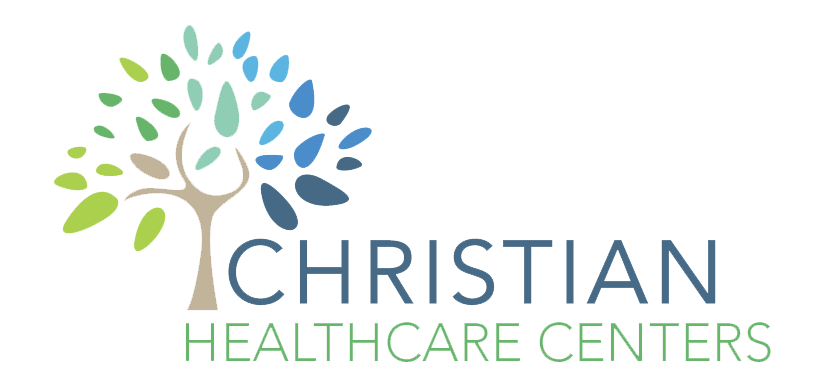You’ve probably heard the saying, ‘You get what you pay for.’ When it comes to healthcare, this adage holds true as well. However, with the rising costs of traditional insurance models, many are starting to explore alternative options, such as direct primary care.
So, what exactly is the difference between these two models, and why should you consider making the switch?
Well, let’s say that the benefits of direct primary care might surprise you.
Key Differences Between Direct Primary Care and Insurance Models
Direct Primary Care and traditional insurance models differ in several key ways.
When it comes to cost implications, Direct Primary Care offers a more affordable option for patients. With traditional insurance models, patients often face high deductibles, copayments, and out-of-pocket expenses. These costs can quickly add up, making it difficult for individuals to afford necessary healthcare. In contrast, Direct Primary Care operates on a monthly membership fee, which covers a wide range of primary care services. This predictable, flat-rate fee allows patients to budget for their healthcare needs without the worry of unexpected expenses.
Another significant difference between Direct Primary Care and traditional insurance models is patient satisfaction. Direct Primary Care emphasizes a strong doctor-patient relationship, with longer appointment times and more personalized care. This approach fosters trust and open communication between patients and their healthcare providers. Patients feel heard, valued, and actively involved in their own healthcare decisions, leading to higher satisfaction levels.
In traditional insurance models, on the other hand, patients often face limited time with their doctors due to the constraints of insurance reimbursement. This can result in rushed appointments, leaving patients feeling unheard and dissatisfied. Additionally, the complex bureaucracy and administrative burden associated with traditional insurance can further contribute to patient frustration.
Cost Comparison: Direct Primary Care Versus Traditional Insurance
When comparing the costs of Direct Primary Care and traditional insurance models, it’s important to consider the financial implications for patients. A cost analysis of both models reveals that Direct Primary Care often provides a more affordable option for individuals and families. Traditional insurance models typically involve high monthly premiums, deductibles, and copayments, which can quickly add up and strain your budget. On the other hand, Direct Primary Care offers a membership-based approach where patients pay a flat monthly fee for unlimited access to primary care services.
By eliminating the need for insurance middlemen, Direct Primary Care providers can focus solely on providing quality care to their patients. This results in cost savings that are passed on to the individuals receiving care. While traditional insurance models may cover a wider range of healthcare services, they often come with restrictions and limitations that can limit access to the care you need. Direct Primary Care, on the other hand, emphasizes personalized care and allows for longer appointments and enhanced doctor-patient relationships.
In terms of quality comparison, both Direct Primary Care and traditional insurance models aim to provide quality healthcare. However, Direct Primary Care offers a more streamlined and patient-centered approach, with physicians being able to spend more time with each patient. This allows for thorough examinations, comprehensive treatment plans, and a higher level of patient satisfaction. Traditional insurance models, on the other hand, may prioritize cost containment and administrative processes, which can sometimes lead to fragmented care and decreased patient satisfaction.
Ultimately, when it comes to comparing the costs of Direct Primary Care and traditional insurance models, it’s crucial to consider your financial situation and healthcare needs. While traditional insurance may offer a broader range of services, Direct Primary Care provides a more affordable option that focuses on personalized care and building strong doctor-patient relationships. By conducting a thorough cost analysis and quality comparison, you can make an informed decision about the model that best suits your needs and budget.
Benefits of a Membership-Based Healthcare Model
A membership-based healthcare model offers numerous benefits for individuals and families seeking affordable and personalized care. With membership-based healthcare, you gain access to a primary care provider who truly knows you and your medical history. This personalized approach allows for more accurate diagnoses and tailored treatment plans. Unlike traditional insurance models, membership-based healthcare eliminates the need for copays and deductibles, making your healthcare more affordable and predictable.
One of the advantages of direct primary care, which is a form of membership-based healthcare, is the increased accessibility to your primary care provider. In this model, you have direct and unrestricted communication with your doctor via phone, email, or even video calls. This means that you can quickly address any health concerns or questions without the need for time-consuming appointments or frustrating wait times. This accessibility can be invaluable when you or a family member is in need of prompt medical attention.
Another benefit of membership-based healthcare is the focus on preventative care. With regular check-ups and screenings, your primary care provider can detect any potential health issues early on, allowing for more effective treatment and potentially saving you from costly medical interventions down the line. Additionally, membership-based healthcare often includes wellness programs and resources to help you maintain a healthy lifestyle.
Lastly, by joining a membership-based healthcare model, you become part of a community that values your well-being. Your primary care provider becomes a trusted partner in your healthcare journey, truly understanding your needs and providing personalized care. This sense of belonging and connection can greatly enhance your overall healthcare experience, ensuring that you feel supported and empowered to prioritize your health.
Access to Care: Direct Primary Care Versus Insurance
With direct primary care, you have greater access to healthcare compared to traditional insurance models. Direct primary care offers a number of advantages that can improve your overall healthcare experience. Unlike traditional insurance models, direct primary care eliminates the need for insurance coverage limitations and provides you with more personalized and accessible care.
One of the main advantages of direct primary care is the elimination of insurance coverage limitations. With traditional insurance models, you often have to deal with restricted networks, high deductibles, and copayments. This can result in limited access to the healthcare providers you need and financial burdens that may prevent you from seeking timely care. Direct primary care, on the other hand, operates on a membership-based model where you pay a monthly or annual fee to have unlimited access to your primary care provider. This means that you can see your doctor as often as you need without worrying about insurance coverage limitations.
To better understand the difference between direct primary care and traditional insurance models, let’s take a look at the following table:
| Direct Primary Care | Traditional Insurance Models |
|---|---|
| Unlimited access to primary care provider | Limited access based on insurance coverage |
| No copayments or deductibles | High copayments and deductibles |
| Same-day or next-day appointments | Longer wait times to see a doctor |
As you can see, direct primary care offers advantages that prioritize your access to care and eliminate the barriers imposed by insurance coverage limitations. This model ensures that you receive the necessary healthcare services in a timely manner, promoting your well-being and peace of mind.
Provider-Patient Relationship in Direct Primary Care
Direct primary care improves access to healthcare and fosters a strong provider-patient relationship. In this model, you aren’t just another name on a long list of patients. Instead, you’re seen as an individual with unique healthcare needs and goals. Direct primary care practices prioritize personalized care, giving you the attention and time you deserve.
One of the key benefits of direct primary care is the increased level of patient satisfaction it brings. With traditional insurance models, you often have limited time with your doctor, leading to rushed appointments and unanswered questions. However, in direct primary care, your provider has more time to spend with you during each visit. This means they can truly listen to your concerns, address your questions, and provide you with comprehensive care. As a result, you feel heard, valued, and cared for.
Personalized care is another aspect that contributes to the strong provider-patient relationship in direct primary care. Your healthcare needs are unique, and direct primary care recognizes that. Your provider takes the time to understand your medical history, lifestyle, and preferences, allowing them to tailor a care plan specifically for you. This personalized approach not only strengthens the bond between you and your provider but also leads to better health outcomes.
In direct primary care, you aren’t just a number or a file in the system. Your provider truly cares about your well-being and invests in building a meaningful relationship with you. This sense of belonging and connection creates a supportive environment that enhances your healthcare experience.
With direct primary care, you can experience the benefits of personalized care and a strong provider-patient relationship, ultimately leading to improved patient satisfaction and better overall health.
Limitations of Traditional Insurance Models
Are you aware of the limitations of traditional insurance models? While traditional insurance models have been the norm for many years, they do come with their limitations and drawbacks. Understanding these limitations can help you make more informed decisions about your healthcare options.
| Limitations of Traditional Insurance Models | Drawbacks |
|---|---|
| Limited choice of healthcare providers | One of the main limitations of traditional insurance models is the limited choice of healthcare providers. With traditional insurance, you are often limited to a network of providers that have contracted with your insurance company. This can restrict your options and make it difficult to see the provider of your choice. |
| High out-of-pocket costs | Another drawback of traditional insurance models is the high out-of-pocket costs. Traditional insurance often requires you to pay deductibles, copayments, and coinsurance, which can add up quickly. This can be particularly burdensome for individuals with chronic conditions or those who require frequent medical care. |
| Complex billing and claims process | Traditional insurance models also come with a complex billing and claims process. It can be challenging to navigate the paperwork and understand what is covered and what is not. This can lead to confusion and frustration for patients. |
| Lack of transparency in pricing | Traditional insurance models often lack transparency in pricing. It can be difficult to know the cost of a procedure or service before receiving it, making it challenging to budget for healthcare expenses. This lack of transparency can lead to unexpected bills and financial stress. |
| Limited focus on preventive care | Lastly, traditional insurance models often have a limited focus on preventive care. The emphasis is often on treating illnesses and conditions rather than preventing them. This can result in higher healthcare costs and poorer health outcomes in the long run. |
Why Direct Primary Care May Be a Better Option
By choosing direct primary care, you can experience a more personalized and accessible approach to healthcare. Direct primary care offers several advantages over traditional insurance models, making it a better option for many individuals.
One of the key advantages of direct primary care is its affordability. Traditional insurance models often come with high premiums, deductibles, and co-pays, which can be a financial burden for many people. In contrast, direct primary care operates on a membership-based model, where patients pay a monthly fee for access to comprehensive primary care services. This fee is typically lower than insurance premiums, making direct primary care a more cost-effective option.
Additionally, direct primary care eliminates the need for insurance paperwork and complex billing processes. With direct primary care, you have a direct relationship with your primary care physician, who can spend more time understanding your unique healthcare needs. This personalized approach allows for more effective and efficient healthcare, as your physician can focus on preventive care and early interventions, leading to better health outcomes.
Moreover, direct primary care provides enhanced accessibility to healthcare. Instead of waiting weeks for an appointment, direct primary care offers same-day or next-day appointments, ensuring that you receive timely care when you need it. This accessibility extends beyond regular office hours, as many direct primary care practices offer extended hours and even virtual consultations. With direct primary care, you can feel confident that your healthcare needs will be addressed promptly and conveniently.
Summary
If you’re looking for a healthcare model that offers cost savings, personalized care, and a strong doctor-patient relationship, direct primary care may be the answer.
It’s like having a trusted partner by your side, guiding you through the maze of healthcare, rather than feeling lost in a sea of paperwork and bureaucracy.
Choose direct primary care for a more streamlined and satisfying healthcare experience.


